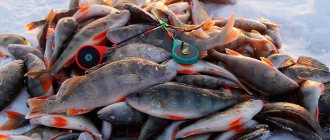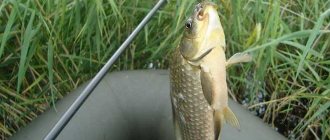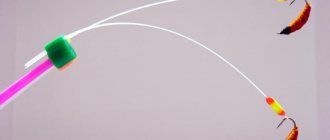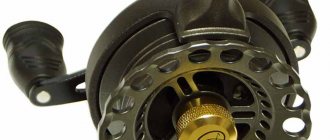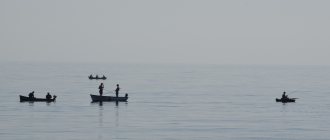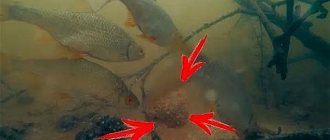Content
- Which winter fishing rod is best for a beginner fisherman to buy?
- What are the different forms of winter fishing rods?
- Types of winter fishing rods
- Winter fishing rods for jig fishing
- Winter fishing rods for fishing with a spoon or balancer
- Winter fishing rod for float fishing
- Electronic fishing rods for winter fishing
- Experts' comments
- How to make a winter fishing rod with your own hands
If you have decided to go out on the ice for the first time this year in search of a trophy, and you don’t know how to properly equip yourself and where to even start preparing, then this article is especially for you. In it, based on well-known facts, as well as on the opinions of experienced fishermen, we will learn how to choose the right main tool for a winter fisherman.
For perch, pike, pike perch
When fishing for pike, perch and pike perch with a winter fishing rod, use a jig, spoon or balancer. For catching perch, all three types of bait are used; for pike and pike perch, the last two are a balancer and a vertical spoon.
Tackle with a nod and a jig.
Fishing with a jig with a nod is the most common during winter fishing. Moreover, the jig is used both with and without an attachment. In addition to perch, roach, bream, silver bream and most other white fish are caught with this tackle.
Healthy ! Top 10 most catchy jigs for perch for winter fishing
Selection of equipment elements
Fishing with a winter fishing rod with a jig and a nod is a fairly active fishing method that requires constant play with the bait, so the tackle should be light.
- For such a winter fishing rod, choose a rod whose handle is made of lightweight materials, cork, various dense foams, lightweight plastics, coated with thermal insulating material that does not cool your hands when fishing.
- Note! For more than 30 years, many fishermen have been using a fishing rod, popularly nicknamed “balalaika”, with a reel embedded in a round or oval-shaped handle, as a light, industrial fishing rod for winter jig fishing. It has proven itself excellent in both sports and amateur fishing.
- The rod is equipped with a small, lightweight reel.
- The whip is elastic, in the case of perch it is quite rigid, allowing it to cut through the mouth of the fish when hooking. Length 20 – 30 cm.
- There are different types of nods, the most common are the following: lavsan nods in the form of a long strip;

- rubber nipple;

- coiled spring nod;
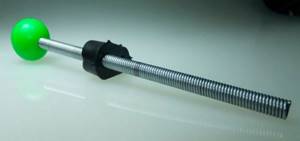
- a nod made from a strip of spring steel, for example from a clock spring (such nods are usually made individually);
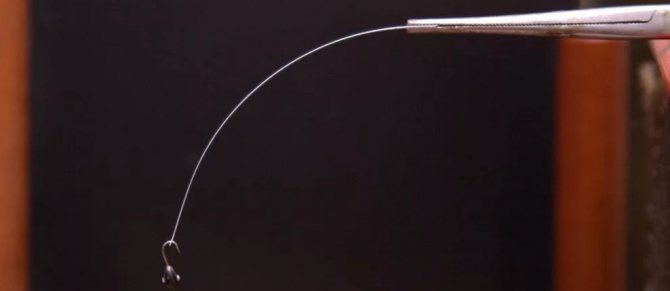
- nod from a silicone tube.
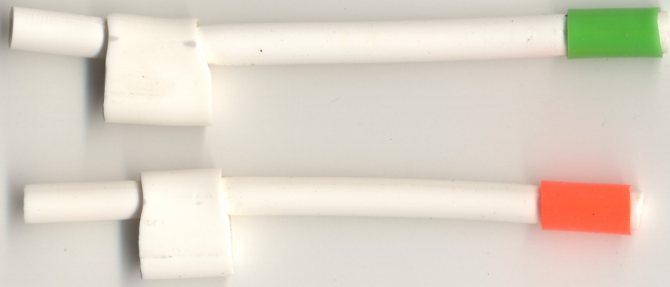
Installation of equipment
Equipping a winter fishing rod for fishing with a nod with a jig, as in the case of a float, should not cause any particular difficulties.
- We wind the fishing line onto the reel. Its length should be equal to two depths of the reservoir in this place plus a couple of meters.
- We attach a nod to the end of the rod.
- We pass the fishing line through the nod; this is done differently for different types.
- We tie a jig to the fishing line. The method of tying depends on the type of jig. For example, if witch or devil type jigs are tied vertically, then most bloodworm jigs are tied so that the hook is at an angle to the fishing line.
The tackle is ready.
Video: rigging a winter fishing rod with a nod and a jig
Fishing rod with nod and balancer
The balancer is a fairly new bait but has already become quite popular among anglers. A winter fishing rod with a nod and a balancer is used to catch predators. They use it to catch pike, pike perch, perch and other predatory fish.
Read about the intricacies of catching perch on the first ice
Selection of equipment elements
When selecting equipment elements for such a winter fishing rod, the fish you are going to catch is very important.
- The rod, as mentioned earlier, should be fairly light, but the larger the fish you are targeting, the stiffer, stronger and longer it should be.
- The reel is selected according to the rod. If, when fishing for perch, you only need it to carry the fishing line. This can play an important role when fishing for large pike.
- The nod is used in proportion to the weight and size of the balancer. It is of significant importance as a signaling device only for perch. A pike perch or pike bite can often be felt simply by hand.
- The fishing line used is monofilament, colored. The thickness again depends on the intended fish.
- Equally important! It is undesirable to use braided fishing line for winter fishing because of its strong freezing. It can only be used for leashes.
- As for balancers, we select them according to the same principle. Balancers of 2–4 cm are suitable for perch, about 5–6 cm for pike perch, and 5 cm or more for pike. The choice of balancer also depends on the fishing depth; the deeper, the larger the balancer.
Installation of equipment
Installation of equipment is not much different from that for a fishing rod with a nod and a jig.
- We wind the fishing line with double plus a couple of meters of reserve relative to the depth of the reservoir.
- We strengthen the nod. For perch - a rubber nipple or silicone tube, for pike or pike perch - a nod from a clock spring.
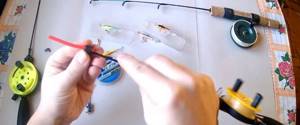
- We pass the fishing line through the nod.
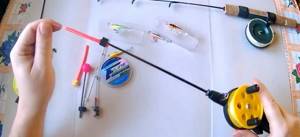
- We tie the balancer.
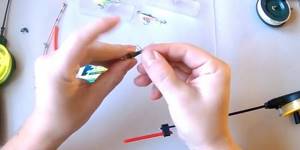
- When fishing for pike, you can use a leash of about 10–15 cm made of braid.
That's it, the tackle is ready for use.
Video: installation of a fishing rod with a nod and a balancer
Kickless fishing rod for winter trolling
The spoon is lighter than the balancer, so the bite on it is felt more clearly. Since, as we have already said, the bite of a pike perch or pike is in most cases felt by hand, many anglers use winter tackle for trolling without a nod. In this case, a very light tackle is used as a fishing rod, which allows you to feel even perch bites.
Check out the ten best spinners and wobblers for pike
Selection of equipment elements
Most of these fishing rods are made by hand. They are based on a homemade lightweight fishing rod made from a winter sports fishing rod and a carbon tip of a spinning rod or a summer fishing rod.
So, for the fishing rod we will need:
- a winter sports fishing rod of the “balalaika” type where the reel is built into the handle body;
- the carbon tip of a spinning rod or fishing rod is at least 35 cm, the main condition is that it is hollow, since the fishing line will pass inside it;
- “Moment” type glue;
- knife and scissors;
- screwdriver with a set of drills.
Fishing rod making process
- We take a sports winter “balalaika” and disassemble it by removing the coil and disconnecting the whip.
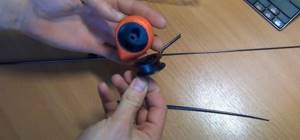
- We cut the carbon tip to the length we need. If there are rings on it, carefully cut them off with a knife . There is no need to remove them using heat, since in areas of overheating, the carbon whip becomes brittle.
- From the set, select a drill whose diameter corresponds to the thickness of the butt of the carbon tip.
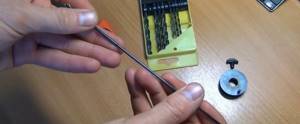
- We drill a hole in the top of the balalaika handle at such an angle so that the fishing line coming out of the winter fishing rod does not rub against the edges of the carbon whip. This hole can also be made manually by holding the drill in a vice.
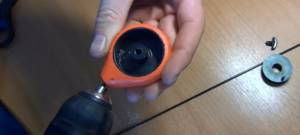
- Using a knife, clean the edges of the hole.
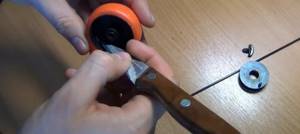
- Having smeared the butt of the whip with glue, glue it into the handle.
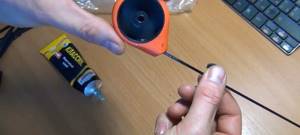
- After waiting a couple of hours for the glue to set, we put the coil in place. All the fishing rod is ready.
In addition to the fishing rod, we will need fishing line and lures for equipment.
We use monofilament, colored fishing line. Its diameter directly depends on the expected catch. For perch it is thinner (0.15 – 0.18 mm), for pike and pike perch it is thicker, from 0.2 mm.
A wide variety of spinners are used. Due to the method of application, vertical lures are most often used during winter fishing. They come in different types and are designed for fishing at different depths and different types of fish. Small ones for perch, larger ones for pike perch and pike perch.
Remember! From mid-winter until the first thaw, pike prefers small fish. Therefore, at the beginning of winter, preference is given to large spoons, and starting from the middle, they switch to small winter spoons.
To make it easier to change lures while fishing, you can use a carabiner.
Installation of equipment
A winter fishing rod for trolling without a nod is equipped quite simply:
- we pass the fishing line through the hollow whip, threading it through the hole in the tip;
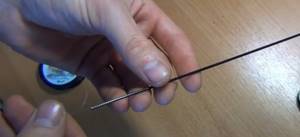
- we wind the fishing line onto the reel, its length should be equal to approximately two depths at the fishing site plus a couple of meters;
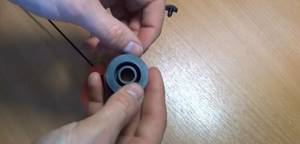
- tie a spoon or carabiner.
The tackle is ready for use.
What are the different forms of winter fishing rods?
All winter fishing rods are divided into three types according to their design. Let's briefly look at each type separately.
"Filly"

A fishing rod with no moving elements in its design. Initially, it had two legs in the handle area, on which the fisherman installed it near the hole. That's why it got its name. At the moment, “fillies” without legs are more common. With this design, a foam handle with special recesses for winding fishing line is used as a reel.
- Pros: due to its low weight, the fishing rod is very sensitive to bites.
- Cons: winding the line back onto the reel.
Classic

A classic version of a winter fishing rod for jig fishing. It consists of a handle on which a reel for winter fishing and a whip are attached. More often, with this arrangement, special legs are used to conveniently position the instrument near the hole.
- Pros: simple maintenance, convenience when catching passive fish.
- Cons: relatively heavy weight, which to some extent affects the performance of the bait.
"Balalaika"
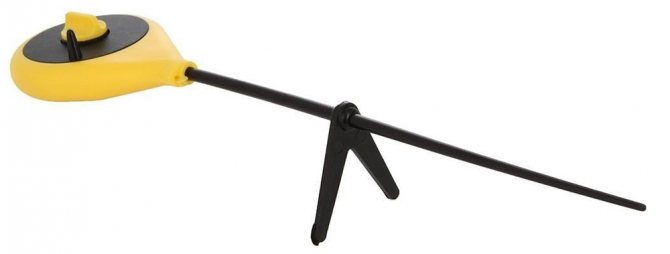
One of the most popular forms of winter fishing rods for jig fishing. The main feature is the coil hidden in the handle body. The main goal of this shape is to shift the center of gravity to the rear of the tackle as much as possible, so that playing with the jig is comfortable.
- Pros: weight, price, convenient bait play.
- Cons: inconvenient when using mittens. Since the spool is a closed type, it is not advisable for snow, ice or just water to get there.
Varieties
There are so many varieties of forms for winter fishing that no one would be able to list them all. It will be difficult for beginners in this business to choose a fishing rod for themselves, at first glance they are all the same, only an experienced angler will be able to determine at first glance which fishing rod should be taken for a specific tackle, or is it better to look for other options.
We invite you to take a closer look at the most popular options, and then everyone can decide for themselves which model to prefer.
For glitter
This type of fishing is mainly used to catch a predator; for this purpose, artificial baits are used as bait:
- spinners;
- balancers;
- rattlins (winter wobblers).
A distinctive feature of such rods is a fairly large reel. Rods for this type of ice fishing resemble a small spinning rod; the whip is often made of carbon, with guide rings and a tulip on it.
With handle and reel
Winter donks and weights are usually collected on winter rods with a reel. This type of blank is considered universal; it is often used for trolling, nodding, and fishing with a float.
This fishing rod is often used for stationary fishing, this is facilitated by the presence of legs in all models. The whip is made of plastic or fiberglass; these models do not have rings or a tulip. The reel is adjusted using a built-in screw or a key; the latter option is more suitable for fishing at depth.
Balalaika
This type of winter fishing rod is a huge success. There are more expensive models, but there are plenty of budget options.
A distinctive feature of the form is the absence of a pen as such. In its place is a built-in coil, which is adjusted by tightening or loosening the screw. The rod is light in weight, and the fisherman’s hand feels the bite perfectly.
Balalaikas are made from a wide variety of materials, the most popular being foam and frost-resistant plastic.
Axleless balalaikas
The axleless version of the rod is even lighter. The structure is almost identical to the balalaika. Due to the void in the middle, the weight of the product is significantly reduced; such forms are made from frost-resistant plastic.
They found a use for it quickly; a reelless jig and a jig with the addition of a bloodworm feel the best. Improved models have cork plates around the rim of the body, this allows you to hold the form with bare fingers even in severe frost.
Sports
Models of this type are lightweight and minimal in size, which allows you to play with a jig more smoothly and accurately. Previously, such forms were made independently, but now they can be bought in almost every tackle store.
With reels
Some anglers still prefer to use rods without reels; such models use reels to store fishing line. Most often, the reel acts as several slots in the handle of the fishing rod, where the base of the tackle is wound.
You can use such a fishing rod both for stationary fishing and for active play with a jig.
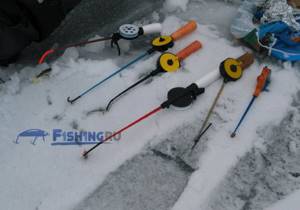
Copyright and special
In some cases, winter forms can be compared to works of art. The production is carried out by the fishermen themselves, and they are made to order for a considerable sum. The most famous are:
- Artuda fishing rods;
- equipped with Bykov;
- Kuznetsov's fishing rod;
- ice fishing rod made of wood by A. Slynko.
Victoria Leshchenko
I've been working hard in the fishing tackle department for the past six years. I can help you assemble almost any gear.
Ask a Question
This list can be continued for a very long time, but it’s still unlikely to be able to list all the models.
Ultralight washers and plugs
Shcherbakov's puck became a prototype for the manufacture of winter fishing rods. Most often, they are made by fishermen themselves; a cork stopper made of champagne or wine is used as a reel and handle. The whip is made of carbon, then the tackle will be lighter. Such fishing rods are used for no-kick fishing; the blow is perfectly felt by the hand.
A rewinderless jig and a small jig with attached bloodworms will work great.
For those who like nods, you can also add this component.
Homemade
There are a large number of homemade options; this includes those fishing rods that, in their design, do not resemble any of the factory models.
The features of such products are lightness, simplicity, and convenience. Production is carried out from foam plastic, cork, wood, and each model is considered unique, because few fisherman first make drawings of the product.
Electronic
This version of the rod can be seen extremely rarely on reservoirs; the peculiarity of the rod is the complete absence of a person. After installing the rod, the mode is set, and then the device does everything on its own. Vibrations set the fishing line in motion, and therefore the jig. The fisherman just has to wait for the bite and bring out the trophy.
There are many types of fishing rods, everyone must choose for themselves, but you can understand whether the selected model is suitable or not only on a pond.
Winter fishing rods for fishing with a spoon or balancer
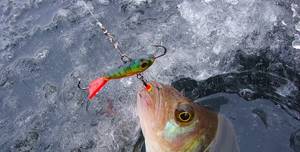
When choosing a winter fishing rod according to its intended purpose, in this case you need to understand that fishing with a spoon or a balance beam means constant movement on the ice and frequent animation of the bait.
- Lever. Now there is a huge amount of this gear on the market, the handles of which are made of modern materials: foam, cork or PVC. These handles are practical and comfortable. When choosing such a fishing rod in a store, take it by the handle and make several jerking movements up and down, simulating animation on a pond. If the fishing rod lies comfortably in your hand, does not slip or turn, then this is the right choice.
- Whip. This element of the winter fishing rod should be given special attention, since a lot depends on its proper operation. Experienced fishermen recommend taking with you several interchangeable whips, which have different sensitivity and length. The average length of whips for fishing with a spoon or balancer is about 40-50 cm.
- Nod. The stores sell a huge number of nods for winter fishing rods, varying in sensitivity, shape and length. Therefore, it is recommended to purchase several options at once, so that when fishing you have the opportunity to choose your own nod for each type of bait. Don't be afraid to experiment.
- Coil. As experienced fishermen assure, the main thing when it comes to a reel is that it has a convenient brake to release the line to lower the spoon or balancer to the bottom.
Electronic fishing rods for winter fishing
When considering simple winter fishing rods, it is important not to miss another type - electronic fishing rods for winter fishing. Some fishermen confuse them with a barbaric and merciless fishing tool - an electric fishing rod. However, we hasten to dispel all doubts - these fishing options have completely different operating principles. Since we are against poaching, we will consider the operating principle and advantages of only one option - fishing with an electronic fishing rod for winter fishing.
What it looks like. Outwardly, it is similar to a regular one: a handle, a whip, a nod and a reel. Its main feature is an electromechanical force that animates the bait in the water.
- Pros: the fisherman gets less tired, the game with the bait can be adjusted as accurately as possible, the animation will occur without “glitches”.
- Disadvantages: difficult maintenance (batteries, fine adjustments, careful attitude), lack of physical contact of the hand and bite. The fisherman can only watch the nod or whip (if a nodless fishing rod is used) and hook the fish in time.
How to choose and what to equip with a winter fishing rod
It is best to select a fishing rod for winter fishing based on how comfortable it is in the hand, how neatly and securely it is assembled, and also based on how much fishing line and what diameter it should hold.
How to choose a whip for a winter fishing rod
In addition to storing a supply of fishing line on the fishing rod, the fishing rod helps you play with a jig or spoon and hook fish in time, as well as help in the fight against fish immediately after a successful hook. To do this, the design of any winter fishing rod has a fishing rod or, as it is more often called, a whip (or whip, depending on the size). The quality of the whip, its length and stiffness are extremely important. Unless only when fishing with a float rig, the quality of the whip is not so important.
The whips that come with industrial products rarely satisfy the needs of the fisherman. Cheap fishing rods are equipped with whips made of polypropylene, nylon or even polystyrene. Polypropylene and nylon whips have very large residual deformation and insufficient rigidity. Polystyrene whips usually break on the first fishing trip. Rarely, industrial fishing rods are equipped with polycarbonate whips, which in most cases are suitable for those who like jig and float fishing.
The best ones that can be found on sale are fiberglass whips. A thin fiberglass whip is great for both a jig rod and a float rod. They can also be successfully used when fishing with small spoons, when a fishing line with a diameter of up to 0.14 mm is used.
If thicker line is used, stiffer rods are usually selected, either thicker fiberglass or hybrid glass-carbon composite. Pure carbon fiber whips can also be used, but only when fishing, for example, for pike perch or bursh, from a depth of more than 8–10 meters. That is, when hard cutting is required. It is difficult to purchase or make such whips yourself, so they use fragments of spinning rods. There is no point in using hollow whips, since they are either not rigid enough or not strong enough.
Some fishermen who have the technical ability make whips from light titanium alloys. Such whips have proven themselves well, especially in cases where “braid” and very heavy bait are used when fishing from great depths and in strong currents.
In addition to the correct selection of material, the correct selection of the rigidity of the whip is equally important. Giving the required rigidity is achieved by changing the length of the whip and grinding off excess material. The easiest way to remove excess material, that is, to make the whip thinner, is with sandpaper, clamping the workpiece into the chuck of a machine tool or electric drill. Personally, I select the stiffness as follows.
I attach the fishing line to the tip of the whip, which I plan to equip the fishing rod with, and pull the fishing line down. If the whip bends about thirty degrees before the line breaks, then good. But if the whip bends up to forty-five degrees, then it seems to me that this is too much. Although many people think differently, so everyone chooses rigidity based on their own experience.
Experts' comments
Now let’s turn to the opinion of experienced fishermen: a jig-fishing athlete and a specialist in the fishing department.
Ivan Sharapov (Predator123), fishing store specialist, experienced fisherman, Candidate of Masters in fishing sports:
— Choosing your first winter fishing rod, just like, for example, a fishing drill, is a responsible matter. Because if, because the store didn’t advise you on what to buy, but simply slipped it to you, you may not like winter fishing, and next year you won’t want to go out on the ice at all. And if you decide to buy your first fishing rod for winter fishing in an online store, then they won’t be able to sell you anything, you’ll just buy a pig in a poke...

I will give some advice to beginners in this matter. First, a fishing rod for a jig. When you come to a fishing store to buy this product, try several options and see how they feel in your hand. This is a very important point, because if the tackle doesn’t “fit” in your hand, your hand will quickly get tired of water bodies during animation. The second, no less important piece of advice for a novice fisherman is to choose a fishing tool depending on the material from which it is made. Personally, I recommend taking polystyrene foam. In the cold, it warms your hand, plus in terms of weight it is one of the lightest. Third, check the spool mechanism. It is important that it rotates freely and is securely fixed with a nut. The fourth is the hole for the fishing line. It is desirable that it be equipped with a cambric. Well, fifthly, the whip is of average rigidity and has no “memory”, so that when hooking a large fish it would absorb shock and we wouldn’t lose our favorite bait on a thin line. This is especially true for such consumables as jigs for winter fishing.
As for a winter fishing rod for trolling or fishing with a balance beam, I would recommend a standard one, equipped with a reel and a key stopper. By the way, when purchasing in a store, pay attention to this stopper; it should not rotate when hooking. I consider neoprene to be the ideal material for a pen. The whip should be of medium hardness.
Friends, when choosing your first fishing rod for ice fishing, understand that there is no ideal middle ground, there is the right tackle for a certain type of fishing, reservoir, weather, etc. Even the most professional fisherman always has several equipment options at hand when on a pond. And finally, taking this moment, I would like to urge you to a sense of self-preservation. Late autumn is a dangerous time for fisherman. Thin ice, snow, due to which you can miss the wormwood, and much more can lead to dire consequences. Be careful on bodies of water, follow basic safety rules and remember - winter is ahead, there will be enough ice for everyone.
Nikita Dupin (ndup), angler-sportsman in the jig discipline, representative of the FishingSib team, Candidate of Masters in fishing sports:
— Like any other winter sportsman, the bulk of my “weapons” are “balalaikas”. However, not simple, store-bought ones, but modified by me personally. Because I think that the store sells “average” goods designed for mass consumption, and I give my fishing rod individuality.
I refine my “balalaikas” to perfect condition so that there are no unpleasant surprises while fishing. The finalization process includes pasting with foam, replacing or adding washers under the spools, and installing my own nods, which I make from popular materials: elastron or lavsan. However, in my opinion, the “balalaikas” beloved by athletes have some disadvantages. First of all, there is a need for improvement.
Another option for fishing rods, which, in my opinion, are more suitable for amateurs rather than athletes, are “fillies”. One of the undoubted advantages is its weight. It consists of a whip and most often a foam handle, so it is very convenient for animating the bait. Of the minuses - in fact, there is only one, it is the constant winding of the fishing line manually on the reel, there is no reel... The second minus is the memory. No matter how good the fishing line you use, there will still be traces of winding on it.
Finally, I want to say that there is something different for every fisherman. When buying winter gear, you don’t have to take only balalaikas, as they were recommended to you. Buy the “fillies” too, try them, compare! I have seen many fishermen who are very successful with both types of fishing rods. This applies to recreational fishing. But if you decide to take up fishing, then you will not only have to experiment a lot and often, but also modify your gear yourself.
By the way, we showed how Nikita refines his fishing rods in one of the episodes of our official video blog.
Features of the tackle
It is worth understanding that the design of a fishing rod for ice fishing is rather of an auxiliary nature; in order to be with the catch, special attention must be paid to collecting the gear. Each individual fishing method must have its own gear.
Stationary fishing
This type of fishing in winter is based on the immovable presence of a baited hook or jig under the ice. The bite alarm is a float or nod; the weight of the rig is selected in accordance with the load capacity of the selected alarm.
A properly configured tackle of this type will allow the fish to grab the bait without fear, but there will be no way back for it.
Attachment jig
Active play with a jig will require precise selection of all components of the tackle. The nod, jig, and fishing line must completely match each other, and don’t forget about the rod. It is worth remembering that the smaller the jig and the greater the depth, the thinner the line should be used. With a thick base, even the most experienced player will not be able to achieve the desired game.
Mothless
This fishing option will require more preparation; a bare jig hook will not be able to properly attract the attention of the inhabitants of the reservoir if there is a glitch in the game or the tackle is assembled from inappropriate components.
It is important to pay attention to the components when assembling gear for a reelless reel; they must be selected perfectly.
For the current
For the current, using light jigs, both without attachments and with bloodworms, is a waste of time. For fishing on rivers, weights and donks are used; the essence of the equipment is a correctly selected weight, it lies on the bottom and holds the hook on the outlet leash in a certain place.
The same installation is done for medium jigs, then passive fishing in the current can be more active.
These are the main types of gear, everyone assembles them independently, but the basic principles are clear.
